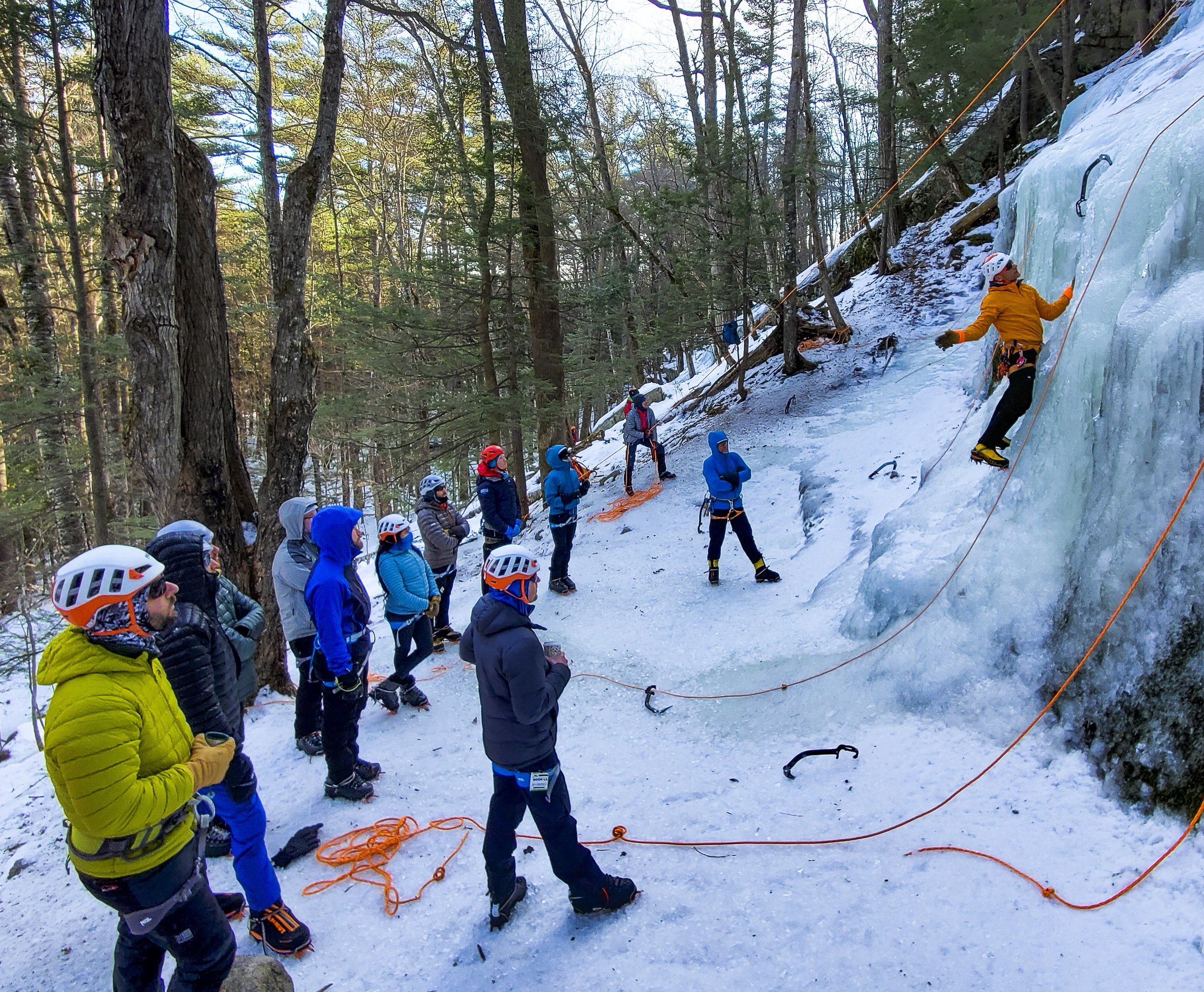How to Prep for Your First Ice Climbing Season
You’ve seen the photos: climbers suspended on walls of glittering ice, tools swinging, crampons kicking into the blue. You want that rush, but the question is—how do you actually start? Ice climbing is thrilling, but your first season goes smoother with smart prep. This beginner guide walks you through gear, training, technique, and why a guide or course can save you time—and keep you safe
Ice Climbing vs Rock Climbing: What Beginners Need to Know
Coming from rock climbing? Ice climbing is another beast:
Movement: Kick front points into ice and swing tools, instead of relying mostly on handholds. Learning to use these tools properly is essential.
Skills: Balance, precise footwork, and trusting your gear are more critical than brute strength.
Decision-making: Ice conditions change constantly—sun, temperature, and recent weather can make a route safe or dangerous in hours.
Understanding these differences early helps prevent habits that don’t translate from rock climbing.
Ice Climbing Training for Beginners: Strength, Endurance, and Technique
Ice climbing demands a mix of strength, endurance, and flexibility. Focus your training on:
Ice climber moving up!
Leg Strength: Lunges, squats, and step-ups develop quads and calves for front-pointing.
Grip and Upper Body: Pull-ups, rows, and hangs protect your forearms and help with tool swings.
Endurance and Cardio: Snowy approaches can wear you out. Trail runs, hikes with a pack, or stairs are great prep.
Proper training ensures your technique shines and prevents early fatigue.
What Gear Do You Need for Ice Climbing
Getting the right gear is crucial. Here’s a beginner checklist:
Helmet – falling ice happens; always wear one.
Harness – make sure it fits comfortably over layers (your gym harness may not work).
Crampons – steel spikes that attach to your boots.
Ice Tools – one in each hand; different tools have different swings- good to try a few.
Boots – stiff, warm, and comfortable.
Tip: Rent or borrow gear first to try a few things and familiarize yourself before investing.
Beginner Ice Climbing Tips: Technique and Movement
Technique makes the climb efficient and safe. Key tips:
Footwork First: Precision with your front points, not brute arm strength.
Tool Placement: Swing efficiently, relax your grip, and trust your feet.
Body Positioning: Keep hips close to the ice and move deliberately.
Start on smaller, low-angle routes to build confidence and control.
Ice Climbing Safety Basics: Why Taking a Course Helps
Ice climbing isn’t just swinging tools—it’s anchors, screws, belaying in gloves, and assessing ice. A course or guide will teach you:
Foundational Movement Skills – proper swings, kicks, and balance.
Recognizing Hazards – how to assess ice and weather conditions.
Intro to Ice Anchors – building safe anchors and placements.
Reading Ice Conditions – knowing what’s safe and what’s not.
Hands-on learning accelerates progress, prevents bad habits, and ensures safety.
Day 1 group learning the basics.
Start Small, Build Confidence
Don’t chase vertical pillars on day one. Focus on:
Short, low-angle ice routes.
Practicing technique and trusting your gear.
Partnering with experienced climbers or guides for feedback.
Starting small builds skills and confidence for bigger objectives later.
Final Thoughts
Ice climbing is different from rock climbing, but the thrill is universal. Focus on training, gear, and technique, supplement with a course or guide, and start with manageable climbs. With preparation, your first ice climbing season can be safe, fun, and addictive—a perfect start to a lifelong passion.


